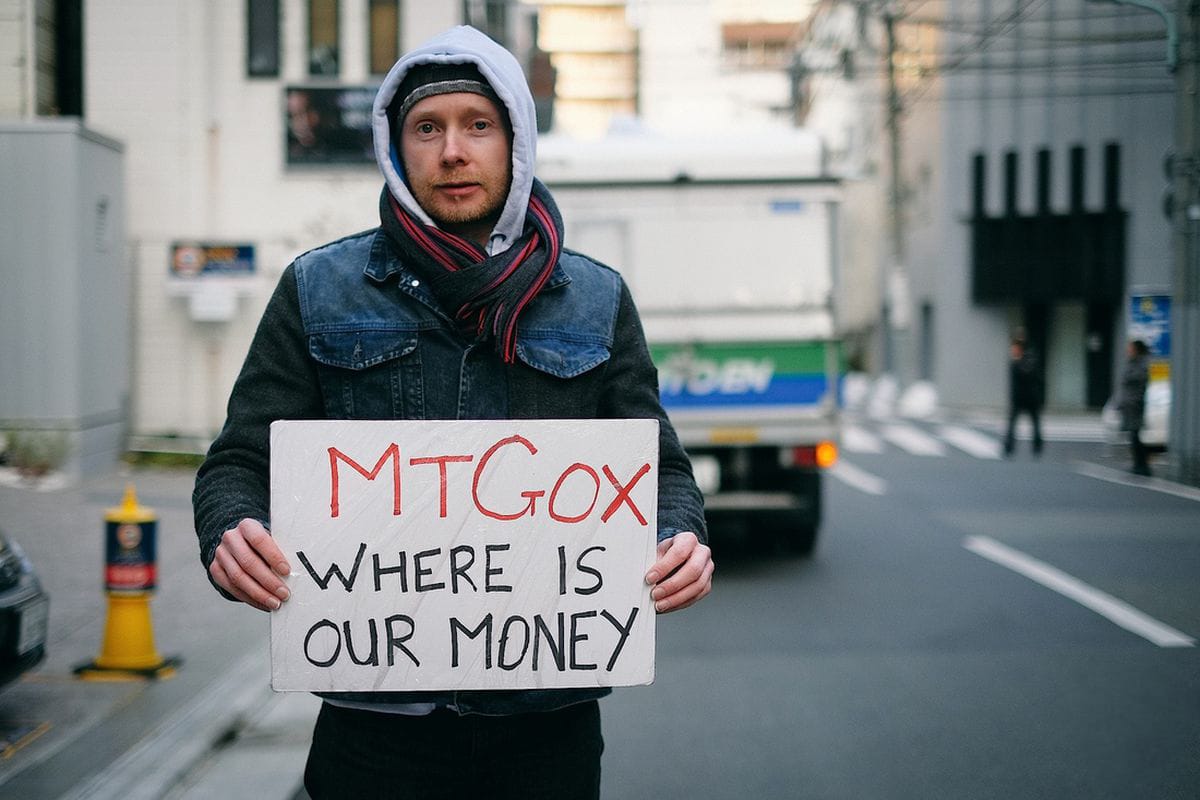Mt. Gox "Where is Our Money" Protest Sign From Bitcoin’s First Financial Crisis Hits Auction Block

In February 2014, Kolin Burges stood in the chilly Tokyo air outside the offices of Mt. Gox, the world’s leading Bitcoin exchange at the time, holding a handwritten cardboard sign that read, “Mt. Gox, Where Is Our Money?” That simple act of defiance turned into a defining moment, marking the beginning of cryptocurrency’s first major financial scandal.
Now, eleven years later, that same sign is up for auction on Scarce.City, with a reserve price of 4.5 BTC, equivalent to roughly $383,000 as of March 28, 2025. The auction kicks off later today and will run until April 3, offering a tangible piece of crypto history to the highest bidder.
Burges, a London native, had flown to Tokyo after Mt. Gox unexpectedly halted withdrawals, leaving him and countless others unable to access their Bitcoin holdings. What started as a personal quest for answers quickly snowballed into a global story, capturing the attention of news media outlets worldwide back in 2014.
Stay In The Loop and Never Miss Important Bitcoin and Crypto News
Sign up and be the first to know when we publishA Symbol of a Turbulent Era
The story behind the sign began with a gut feeling for Burges. He woke up one morning, checked his Mt. Gox account, and realized his withdrawal wasn’t coming. “I didn’t have a detailed plan,” he recalled. “I just knew I had to be there.” Arriving in Tokyo, he confronted Mt. Gox CEO Mark Karpeles in the snow, demanding clarity, only to be met with vague excuses about technical glitches. That encounter, coupled with the exchange’s increasingly erratic responses, painted a grim picture of a company in freefall. Burges, which at this time is unclear if he ever received his Mt. Gox creditor repayments, which according to our own data shows he was due to receive back 311 BTC, is currently valued at over $26 million.
As Burges continued his protest, Mt. Gox’s efforts to manage the crisis grew more frantic. Representatives invited him inside to protest out of sight and even met him privately over drinks, warning that his actions could tank the exchange entirely. “They told me everyone would lose their Bitcoins if I kept going,” Burges said, noting how one staffer’s credit card was declined during that meeting, an early hint of the firm’s crumbling financial ties. Days later, Mt. Gox filed for bankruptcy, confirming the fears of its users.
The fallout from Mt. Gox’s collapse reverberated for years. Karpeles faced legal battles in Japan, ultimately avoiding prison time for embezzlement in 2021 but receiving a suspended sentence for data manipulation. Since then, he has reentered the crypto space, launching EllipX, a new exchange, in September 2024, and Ungox, a crypto ratings firm, in 2022. Speaking with CoinDesk at Korea Blockchain Week in August 2024, Karpeles suggested that modern tools like blockchain analytics and third-party custodians could have prevented the Mt. Gox disaster.
For Burges, the auction represents more than a sale, it’s a chance to pass on a relic from a pivotal chapter in Bitcoin’s journey. That handwritten sign, born out of frustration and desperation, now stands as a testament to the wild, uncertain early days of cryptocurrency; a reminder of how far the industry has come and the lessons learned along the way.

